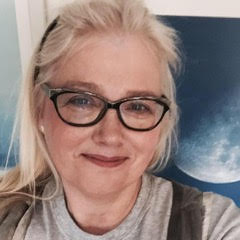“You had the power all along, my dear” – Glinda, the good witch
We all know this classic story from the 1930s.
Dorothy and her dog Toto are transported by a cyclone to the magical land of Oz, where they journey via the yellow brick road through a process of discovery towards courage (the lion), wisdom (the scarecrow) and love (the tin man).
When Dorothy realises that she is able to click her heels and transport herself back home, Glinda, the good witch, observes that, “You had the power all along, my dear”. In a sense, we are all like Dorothy in that we all already have the inner resources to find our own solutions, it’s just that sometimes we need the support and gentle guidance of others to help us recognise this and develop our own strategies so that we can thrive.
Follow your own yellow brick road
At brainstrust, our support service is built on the belief that everyone is expert in their own experience, and as such we are all fully capable of finding our own solutions to life’s challenges.
Quite simply, although we can’t necessarily fix a problem for you, we can work with you to help you figure out what it is that you need, and then what steps you might take to achieve it.
We can support you in this process, journeying down your own yellow brick road, through the provision of coaching, resources, education, information and unconditional support.
One such support offer from brainstrust is the provision of regular group hypnotherapy sessions, run by our wonderful hypnotherapist Louise.
Meet Louise
We are so fortunate at brainstrust to have the wonderful Louise Baker (MSc Psychology and Neuroscience of Mental Health) as our own consultant hypnotherapist.
Louise has run successful private hypnotherapy practices for over 20 years, including Harley Street and The Wren Clinic, helping hundreds of people during this time using a variety of approaches. Recently retired from 1:1 work, Louise is now focused on bringing the power of this work to groups for brainstrust.
Despite Louise’s impressive career and educational credentials, she’s a lovely normal person too! She lives in Cornwall with her husband and her poodles and enjoys walking on the beaches and clifftops near where she lives. Most importantly for us, Louise cares passionately about supporting people living with a brain tumour diagnosis to live the best life that they can, free from anxieties that make life challenging.
Will you make me cluck like a chicken?
Thanks to the popularity of stage hypnotism, there can be a misconception that hypnotherapy will make us act in strange ways, acting involuntarily as if under a spell.
We’d like to reassure you that this is absolutely not the case! In fact, during your first session Louise will share with you some of the secrets of stage hypnotists and how they are able to achieve these results – having some people clucking like a chicken, or convinced that they are wearing X-ray glasses!
I was very anxious beforehand, but was put at ease straight away by Louise – hpynotherapy webinar attendee, March 2021
Creating calm spaces: towards self-management of anxiety
Your first session with us will take you through some of the theory behind hypnotherapy, covering: some neuroscience of hypnosis, an evidence-based way of understanding neuroplasticity at work; and you will gain an understanding of how hypnotherapy enhances the way we learn new ideas.
These key ideas and concepts form a foundation of knowledge from which you will practice your new skills, allowing you to have an understanding and practical experience of creating and maintaining your own unique spaces and places within.
The aim of these sessions is to support you to practice hypnosis to the point of being able to self-manage in anxiety-inducing situations and settings, such as hospitals or waiting for an MRI scan.
Once you’ve attended the introductory theory session, we encourage you to keep coming back to our ongoing follow-up group hypnotherapy sessions, as much as you need, for your own support and growth.
Reminded me of the strategies I can use when I’m feeling stresses and anxious. Gave me an opportunity for complete relaxation, much appreciated! – hypnotherapy webinar attendee, March 2021
The Wizard of Oz as a metaphor for hypnotherapy
Let’s think again about Dorothy. She falls asleep and is transported to a wonderful land where she travels along the yellow brick road, supported by new friends in her journey towards self-discovery. She had the power to get home all along, she just didn’t realise it.
Dorothy travelled on her journey and faced challenges and fears along the way. With the support of others and a bit of hard work from herself, she was able to discover her inner resources and make positive changes.
This feels like a beautiful metaphor for our group hypnotherapy sessions: “You had the power all along, my dear”.
Join us for the next sessions
It was really good to learn techniques for managing scanxiety and for Louise to share her wealth of knowledge on the functions of the brain. I really liked the practice elements too in the session, to help remember and embed the techniques.
I used the techniques before and during my most recent MRI and it really helped me. Thank you so much for providing these sessions. I look forward to the next one – hypnotherapy webinar attendee, September 2020
Book your free place at a brainstrust group hypnotherapy session today: find these events and more, here.














